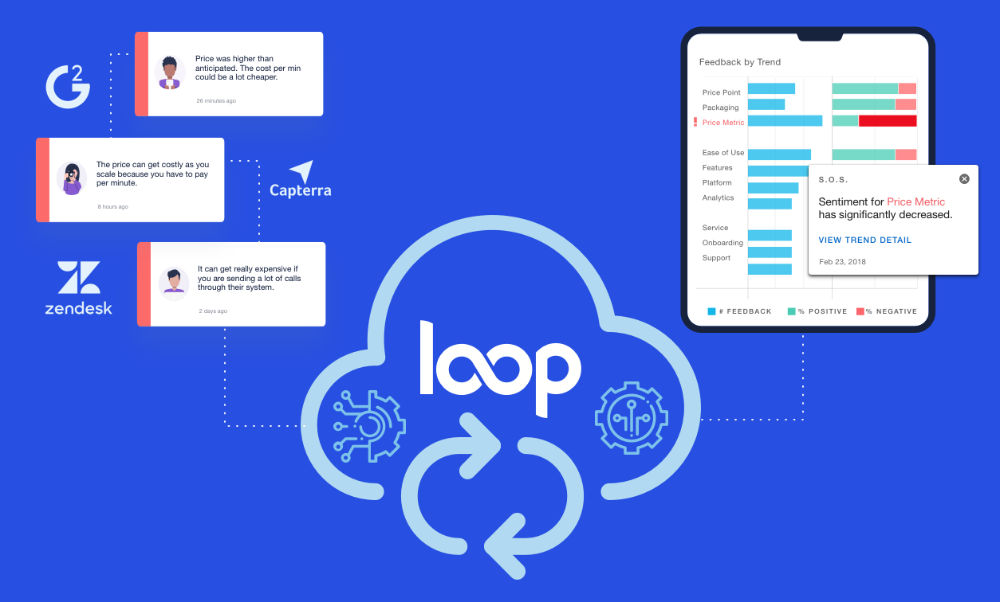Home » Why SaaS Companies Should Prioritize Online Review Sites for Customer Feedback
Why SaaS Companies Should Prioritize Online Review Sites for Customer Feedback
Madeline Turner

We’ve been meeting and speaking with B2B product marketers across the space. In each conversation, we learn more about the various ways organizations are incorporating customer feedback into their business strategy. One of the biggest surprises that has come from these conversations is how few organizations are paying attention to customer feedback on online review sites. We’ve heard several times that this is not a channel they’ve historically prioritized. Instead, they’re prioritizing customer surveys or feedback from sales calls.
G2 research shows that 92% of consumers are more likely to purchase a product after reading a positive online review. And 88% of consumers trust reviews as much as personal recommendations.
If this is true, why aren’t more organizations prioritizing B2B review sites as a customer feedback channel? According to G2, B2B companies that are taking advantage of review sites are seeing massive amounts of success.
92% of buyers are more likely to purchase a product or service after reading a trusted review.
Prioritizing Online Review Sites for Customer Feedback
Most often, when B2B review site strategies are discussed, we’re focused on the importance of using this channel to generate interest and leads. And while this strategy is valid, we can’t overlook the importance of using this channel to improve our products and the customer experience.
Organic customer feedback is a gift. It’s insight into the customer experience and guidance for where the experience can or should be improved. When customers leave feedback on their own on review sites, it’s likely the feedback your organization needs to hear rather than the feedback you want to hear. And that’s ok. It’s great, actually. Not everyone is going to have the perfect experience with your brand or product. And organizations need to know when the experience has fallen flat or the product didn’t provide the value expected. This is the feedback that makes better products and better companies. This honest feedback also builds more trust with potential customers.
Nobody expects perfection all the time. What customers do expect, however, is for organizations to pay attention and address issues with accountability.
Our online review strategy shouldn’t be reserved solely for our happy customers. Prioritized, maybe. But if we’re only asking for happy customers to leave reviews, we’re missing the point of feedback. We’re treating feedback as a means for increasing sales, rather than as an opportunity to learn and to grow.
We need to create a culture that embraces customer feedback—that sees feedback as a gift and welcomes feedback as a means to realize our vision. This is the kind of authenticity and accountability that customers crave. It’s also the kind of feedback that demonstrates authenticity, according to G2’s research.
Negative reviews are not always bad. People are more likely to trust a brand with reviews range from 4.0-4.7 and remain wary of any brands that have a perfect 5 stars.
Customers give feedback because they expect it to be acted on. If we’re only searching for feedback to validate status-quo and not actually addressing issues, customers will stop giving it.
According to a study by Medallia, “half of consumers reported ignoring a customer survey because the company didn’t make enough of an effort to resolve past issues.”
If you’re concerned about negative online reviews, then you already know there’s a problem. Covering it up—masking the problem with overwhelmingly positive reviews—isn’t going to improve retention. Rather, the pattern of negative feedback and customer churn will continue. No amount of happy customer reviews online will change the fact that there are issues with onboarding or customer support. The power of customer feedback isn’t in the feedback itself, but what you do with the feedback you are given.
Tips for embracing customer feedback and prioritizing online reviews:
Ask for feedback as part of your onboarding program
The onboarding process is a critical time to ensure customer success. New users are learning how to use your product and engage with your company. It’s important that you set the foundation with customers early on—let them know from the beginning that their feedback matters, that they are heard, and that issues or ideas for product enhancements are being addressed.
Let them know the best avenues for sharing feedback, whether that is via email, in-app, online, or through surveys. Don’t make them search for the best way to share about their experience.
Offer real-time options for customer feedback
In Medallia’s report, 53% of consumers noted that they wanted to be able to provide feedback immediately. If they’ve had a great experience or a poor experience, your users want to be able to share about this in the moment. Whether this means including chat features on your website or offering in-app surveys, your customers want the option to share their feedback now, not later.
The same study revealed that 66% percent of consumers expect the ability to provide feedback about products and services on the channel they are currently using. Ensure that there are avenues for customers to engage and share their feedback on the channels they are already engaging.
Ask for online reviews as part of your NPS Survey
NPS Surveys are a goldmine for qualitative customer feedback. Using a tool like Loop can also help to surface major trends in feedback responses so that your team can focus on addressing the common issues or opportunities more quickly.
In addition to NPS survey responses, you can ask respondents to share their experiences publicly on online review sites. We would recommend focusing on extending this ask to promoters and developing specific follow-up strategies with detractors. If respondents express specific concerns about the product or experience with your company, your first step should be direct outreach to understand what’s causing the issues and then outlining the specific steps that will be taken to make it right.
Once issues with detractors have been addressed, this is a great opportunity to ask for them to talk about their experience on a review site. When customers are shopping for a solution, some of the best stories told by existing customers are those about how an organization took accountability to solve a problem. This gives potential customers confidence that their success and experience matters to your company. Customers don’t just want a great product, they want a great partnership. Curate the stories that demonstrate how you act and service customers when challenges arise.
Be weary of survey fatigue
Establish alignment across your organization for gathering feedback. Don’t make customers take multiple surveys for each touchpoint with your company. Establish an organizational survey strategy and protocol. This ensures that your customers aren’t being bombarded with requests for feedback and that the right questions are being asked at the right time. As specific issues or opportunities are uncovered, the impacted customers can be contacted directly by the appropriate team for discovery and next steps.
Customers expect alignment across your organization. Don’t let your internal silos create more work for them.
Monitor Online Review Sites Regularly
Customers are validating purchase decisions on B2B review sites. It’s important for you to have a presence on these sites and to monitor the feedback that’s shared about you and about your competitors.
Not only is this important to understanding what’s working and what’s not working for your customers. These channels also provide visibility into what’s working and not working for competitors.
Compare your customer feedback to competitor feedback on B2B Review sites to understand the following:
- Share of Voice: How does your volume of customer feedback compare to competitors? How recent is your customer feedback in comparison?
- Benchmarks: Are your customer feedback trends unique, or are competitors receiving similar feedback?
- Industry value: Where are users placing the most value in the collective feedback—product features, pricing, or customer support?
B2B customer review sites are being used by our customers to drive purchase decisions. Feedback shared on these sites (assuming authenticity) is trusted. Prioritize this channel not just for brand awareness and leads, but for constant learning and improvement.
Here’s a shortlist of the B2B Review Sites your organization should be paying attention to:
Loop was built to help organizations listen, understand, and act on customer feedback from channels like B2B review sites. Let us know if you’re interested in learning more, or sign-up for your free trial here



